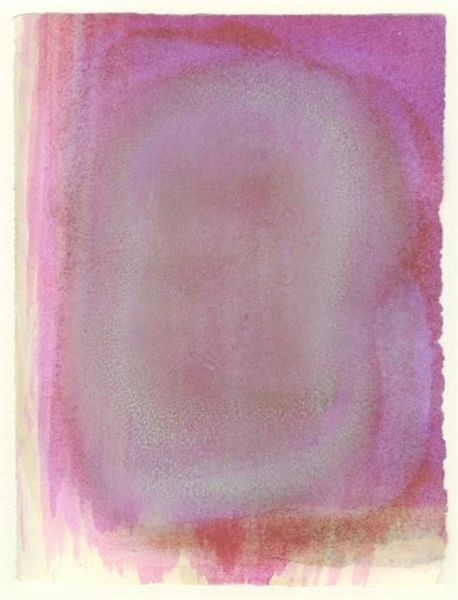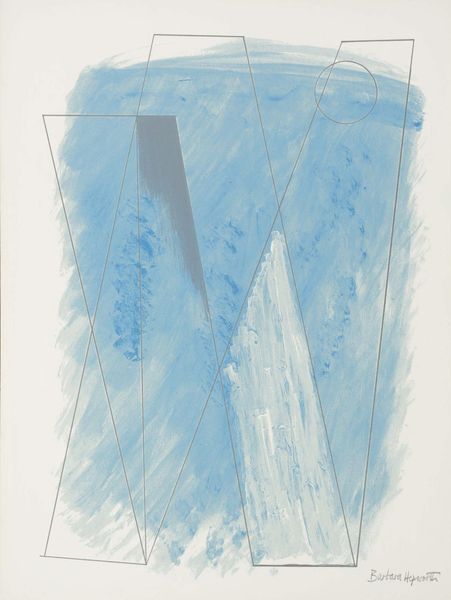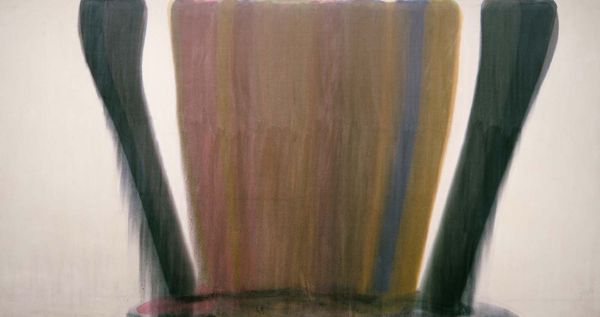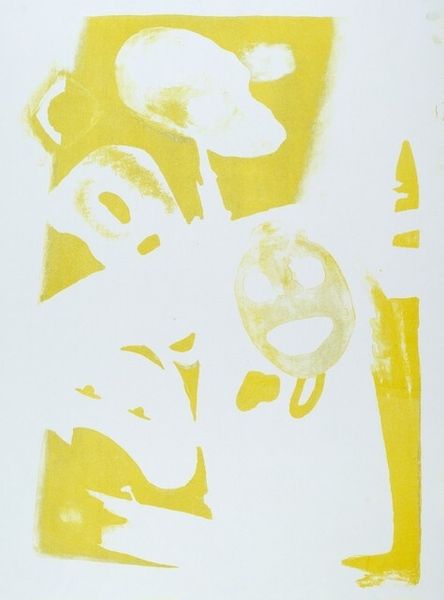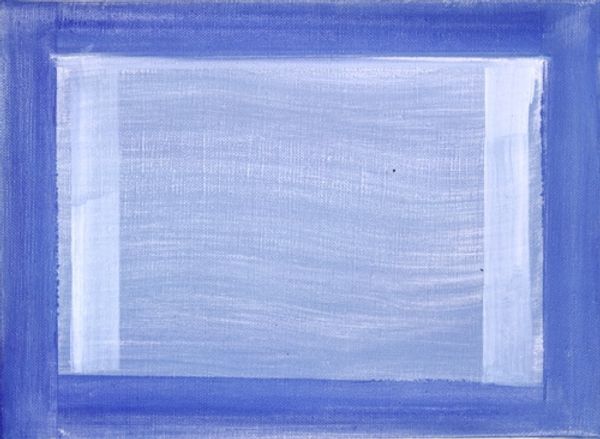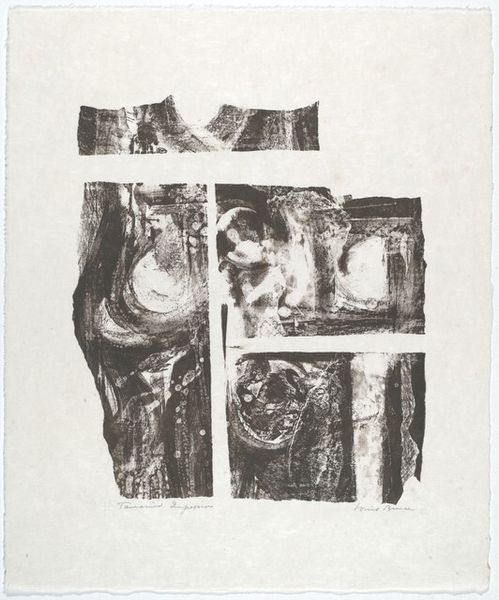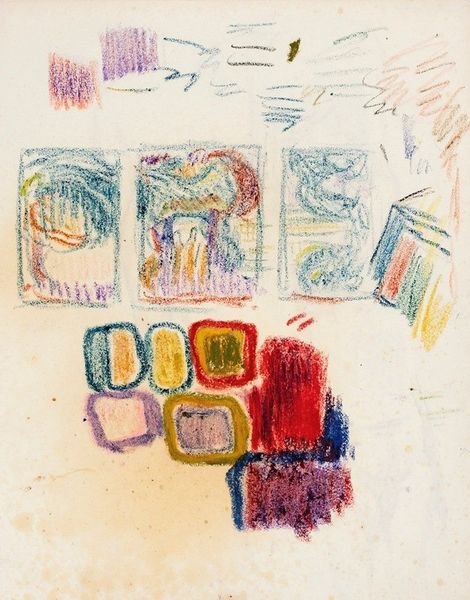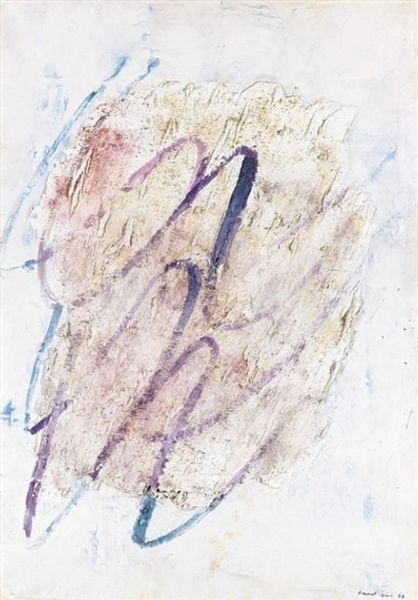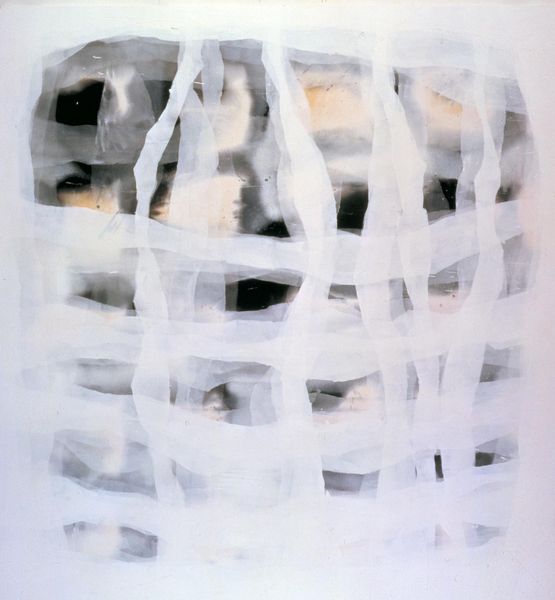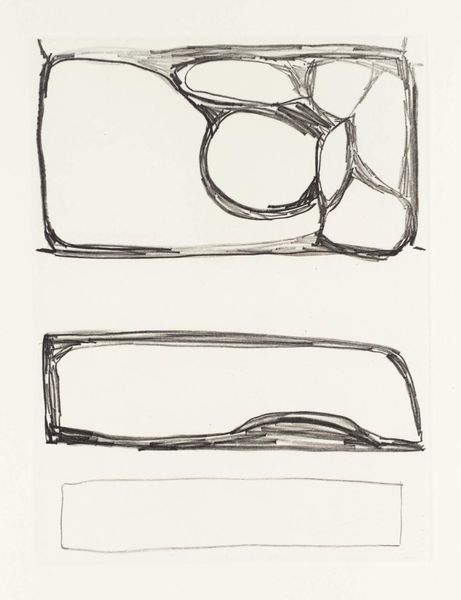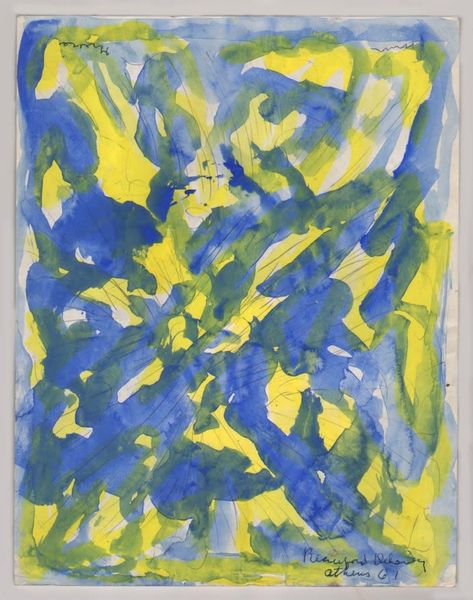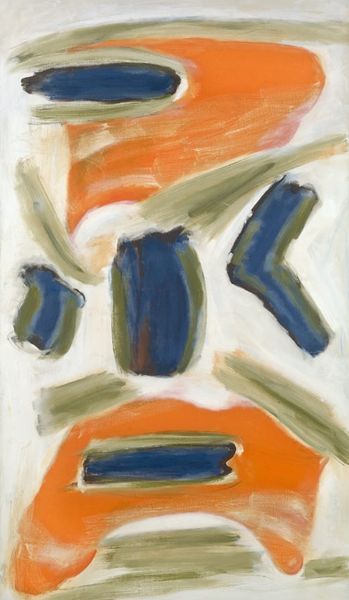
painting, acrylic-paint
#
contemporary
#
painting
#
acrylic-paint
#
matter-painting
#
abstraction
#
modernism
Copyright: Raoul De Keyser,Fair Use
Curator: This is Raoul De Keyser's "Sketchy Cobaltic Blue Flag," an acrylic painting created in 2009. De Keyser, a prominent figure in late modernism, often played with the boundaries of abstraction, leaving viewers questioning what constitutes a painting. Editor: You know, my immediate reaction is... melancholic calm. Like a hazy memory of summer sky reflecting on a forgotten window. The sketchiness, as the title suggests, only reinforces this dreamlike, fleeting quality. Curator: It's interesting you pick up on that. Many critics view his work as a commentary on the arbitrary nature of national symbols. The use of "flag" in the title invites that reading. Consider the socio-political context of the early 2000s – heightened nationalism, shifting borders – and how an abstract "flag" destabilizes the idea of fixed identities. Editor: Huh, I hadn’t thought about it that way at all. It's so blue, and yet so…unfirm. Like a blue ghost of an idea. It doesn't scream patriotism at all. More like, the idea of patriotism fading like watercolor left in the rain. The color is soft but it does have an insistence, like blue can't not be blue. It's stubborn, but not shouty. Curator: Exactly. And that subversion is deliberate. His muted palette, the hesitant lines – they challenge traditional notions of authority and belonging, offering a nuanced perspective on national identity as a construct. Editor: It's as if the very idea of a flag has been deconstructed, washed out, and hung to dry, with the drips being an essential part of the image. Does that make any sense at all? Curator: Absolutely. The ambiguity of the image forces us to question what a flag truly represents, particularly in a globalized world where identities are increasingly fluid. The material also contributes to his message, as the streaks are visible at the canvas layer of the artwork. Editor: De Keyser gives the canvas to the world in his color palette; thanks to his artistic expression, people can ask what is happening in the world by seeing something abstract and not something clearly visualized. I dig it. Curator: It's a powerful statement—one that encourages critical reflection on our allegiances. Editor: I think what really stays with me is how simple and honest the marks seem.
Comments
No comments
Be the first to comment and join the conversation on the ultimate creative platform.
